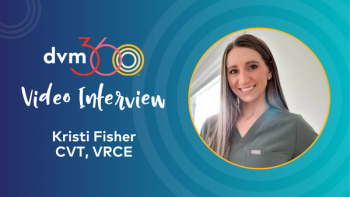
- dvm360 April 2019
- Volume 50
- Issue 4
Our clients hate the ER hospital. I say, Get over it!
This practice manager pleads the case for specialty and emergency veterinary centers.
I manage a mom-and-pop veterinary practice. In fact, it's my own mom and pop's practice. My parents (both veterinarians) started our “shop” in 1978. If asked, I'd say our philosophy is, “Take care of the customers and they'll take care of you.”
We've never advertised; our primary source of new business is word of mouth (72 percent, to be specific). The rest comes from people searching and reading online reviews and from those who drive by and see our facility. We trust referrals, and we refer to local specialists and emergency centers on a daily basis.
We've noticed something recently. In the past few years, our customers have had rather honest and sometimes harsh things to say about the specialty and emergency centers in our area. Keep in mind that we're located in what used to be a farm town, which now more commonly grows housing developments, situated along the I-95 corridor in the middle of New Jersey. It's a well-off area, for the most part. The median home value in our zip code is around $425,000, and loads of people who live here travel to either New York or Philadelphia each day to their well-paying jobs.
It's hard to understand, for that reason, why our customers seem to think that when they take their pet to an emergency clinic at 3 a.m. on a Saturday, it shouldn't cost more than $150. They seem astonished when the $600 bill for that gash on Rocky's snout is placed on the counter in front of them and the friendly associate asks, “Will that be cash or charge?”
We hear them in our waiting room. “I had Buddy over there a few months ago-he cracked his nail and Doc wasn't open (it's always that we weren't open). They charged me three hundred bucks. For a cracked nail!”
They also don't understand why Spanky's MRI-assisted laser surgery in a sterilized surgery suite under a roof housing the most advanced medical equipment and well-trained professionals for miles around could possibly cost 10 grand. After all, it's just a run-of-the-mill ACL repair. Isn't this stuff cheap by now?
I've been a part of these conversations too many times to count. I've stepped back and thought about it from both sides. And I have to say, I can't side with the customer on this one. The customer is not always right.
The tipping point, for me, was when a woman walked into our appointment-only practice with dog in hand, bluntly asking, “How much for a blood panel?”
I wanted to answer “For what?” but my training told me not to. “We should discuss your pet's needs,” I said, “but a complete blood count and chem panel along with a comprehensive exam, which is necessary before we can complete any medical procedure such as a blood draw, will cost in the area of $182.”
Honestly, I've seen many an invoice from other local clinics, and that's a good rate, even for less-inflated parts of the country. But we try to keep it reasonable. Again, “Take care of your customers and they'll take care of you.” Well, apparently Mrs. Knowsalot hadn't seen those same invoices.
“You've got to be f---ing kidding me!” (I kid you not, she said the f-word). “Two hundred dollars for a blood screen? I'm a human and I don't pay anywhere near that for my own blood screens.”
Ah. This is where I felt like I was floating on a cloud. Or no-sitting on a throne, grapes in one hand and dozens of gold chains in the other.
“Well, of course you don't. Health insurance covers most of your expenses. Do you have pet insurance?”
There was a long silence.
“No.”
“Well, the charge without insurance is $182. With pet insurance, you'd likely receive roughly 80 percent of that back.”
She didn't end up booking the dog's bloodwork with us. Perhaps I made her feel unprepared. Or maybe, just maybe, I brought to her attention something most pet owners need to hear. Pets aren't cheap. The total cost of a pet's healthcare from birth to death is $17,700 if pet owners follow top-level care recommendations, according to
It's not our industry driving up these costs-no, we're simply keeping up with the demands of pet owners. They're expecting more. They're providing more (seriously, it seems like more dogs eat gluten-free than people these days). Unfortunately for us, pet owners are also blaming more.
They take their frustrations out on us because we charge them for our services. We're supposed to be the “compassionate” industry. Sorry, folks, but compassion doesn't pay back $200,000 in student loans, $1 million in facility costs, $4,000 to $5,000 annually in license and CE fees, tremendous amounts for insurance and the thousands needed to stock our shelves with the same products you turn around and buy at Walmart. When you walked in, you knew this was a business. Get over it.
So I say, good for you, 24/7 emergency centers. Build your incredible hospitals, bring your amazingly smart and passionate team with you, and charge for it. Because you deserve to be just as happy as the pets you treat.
Brent Dickinson is practice manager at Dickinson-McNeill Veterinary Clinic in Chesterfield, New Jersey.
Articles in this issue
over 6 years ago
Commentary: Alvins trip to the veterinarianalmost 7 years ago
New initiative aims to spread heartworm awareness, actionalmost 7 years ago
The future of veterinary medicinealmost 7 years ago
Laser therapy dosing explainedalmost 7 years ago
Can't we just sit tight sometimes?almost 7 years ago
dvm360 Hospital Design Competition announces 2019 winnersalmost 7 years ago
Reexamining the early spay-neuter paradigm in dogsalmost 7 years ago
Dangerous new tick species migrating to North Americaalmost 7 years ago
Petplan gives North American awards at VMXNewsletter
From exam room tips to practice management insights, get trusted veterinary news delivered straight to your inbox—subscribe to dvm360.





